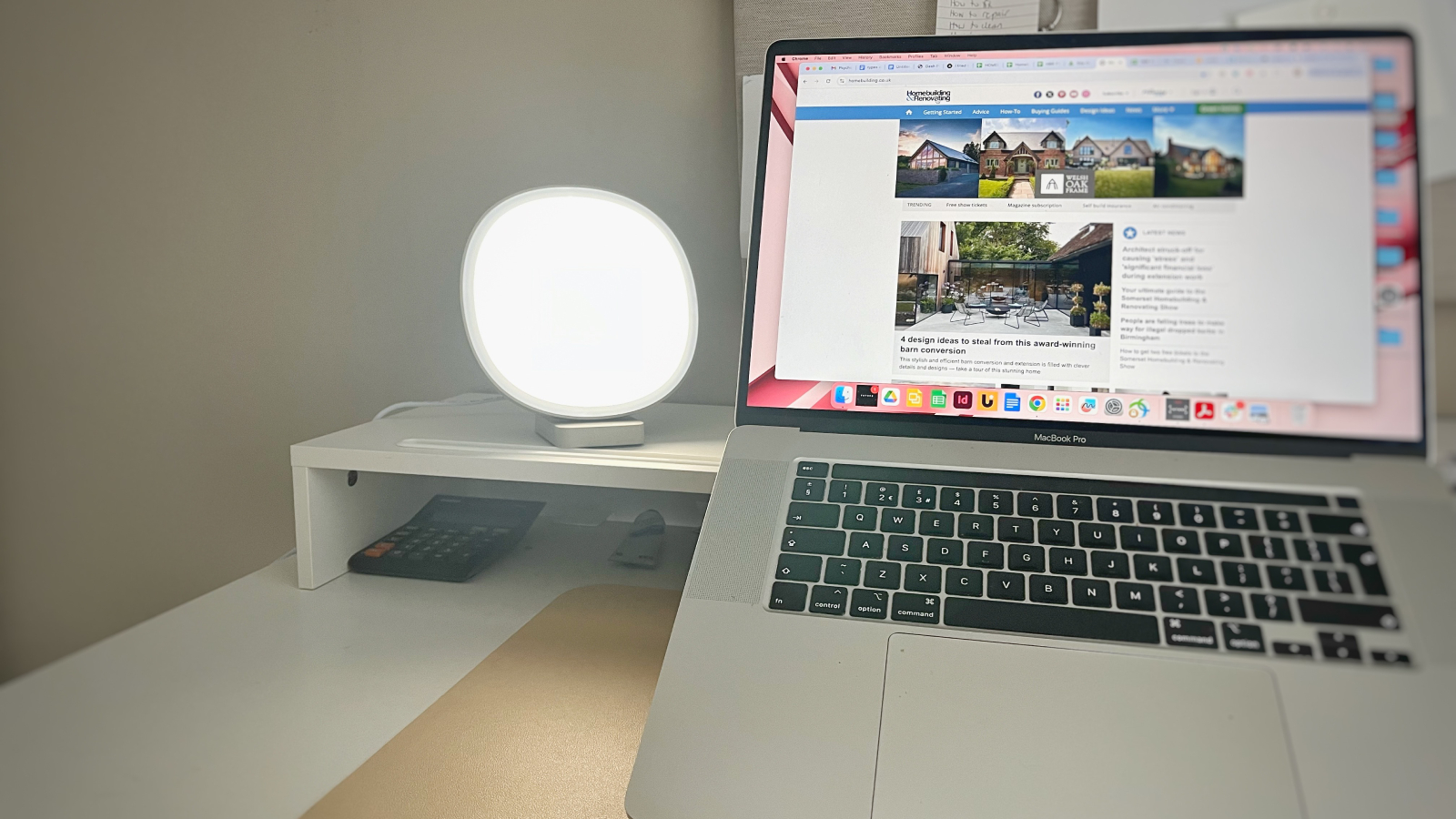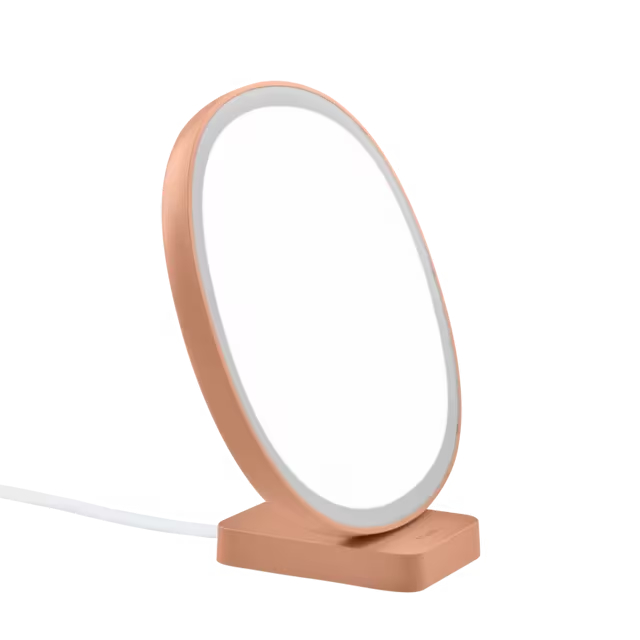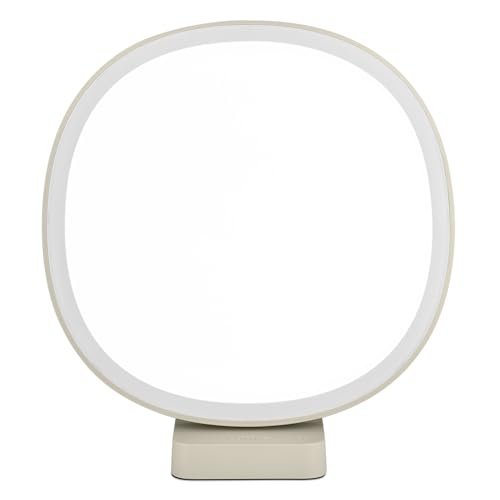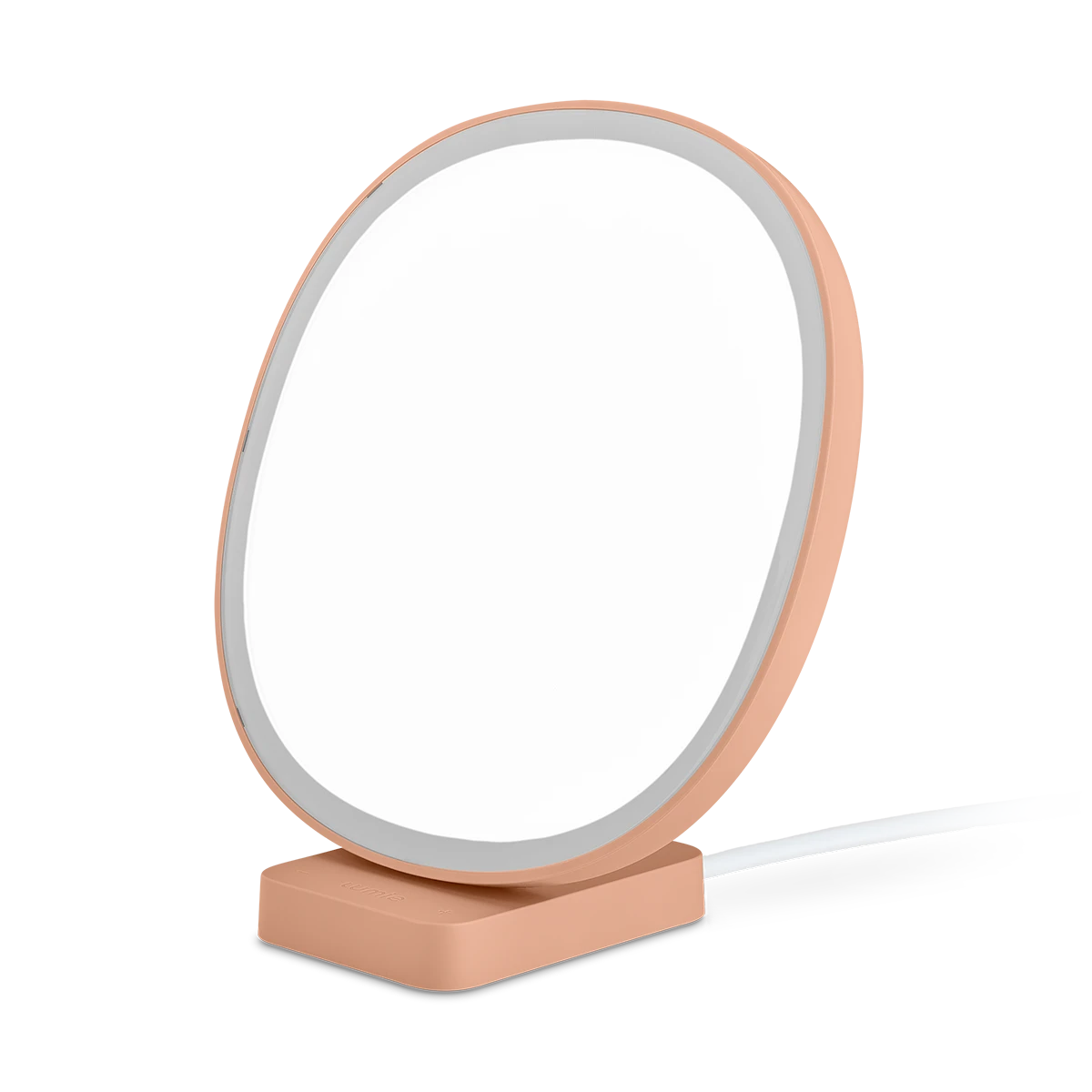Homebuilding Verdict
Although I don't have a medical diagnosis of SAD, the low light and darker days affect my mood as soon as we move into autumn. Using light therapy has certainly helped, although it took a while to get the right balance
Pros
- +
Size
- +
Lightweight
- +
Ease of use
- +
Dimmer function
Cons
- -
Fixed design
You can trust Homebuilding & Renovating.
There's something about the changing of the seasons that dampens my spirits. Even though we may not have had endless days of summer sunshine, waking up to daylight and evenings that approach gradually, rather than abruptly as they do in winter, helps lighten my mood.
And while getting outside in the daylight does help, working full-time doesn't always allow for this every day – and neither does the weather. But, can artificial daylight ever be a true replacement for natural light? Medical experts officially claim it can, and those with an official SAD diagnosis can even claim VAT relief on light therapy products.
So, while I may not have a diagnosis, anything that makes the short winter days seem more bearable, is worth a shot, which is why I chose to review the newest offering from Lumie, inventors of the first wake up lamp.
Shop for the Lumie Dash light therapy lamp
How SAD lamps work
According to the NHS website: "The exact cause of SAD is not fully understood, but it's often linked to reduced exposure to sunlight during the shorter autumn and winter days. The main theory is that a lack of sunlight might stop a part of the brain called the hypothalamus working properly, which may affect the:
- Production of melatonin – melatonin is a hormone that makes you feel sleepy; in people with SAD, the body may produce it in higher than normal levels
- Production of serotonin – serotonin is a hormone that affects your mood, appetite and sleep; a lack of sunlight may lead to lower serotonin levels, which is linked to feelings of depression
- Body's internal clock (circadian rhythm) – your body uses sunlight to time various important functions, such as when you wake up, so lower light levels during the winter may disrupt your body clock and lead to symptoms of SAD."
While a number of treatments are suggested, light therapy is one of them.
Artificial daylight or light therapy lamps, such as another Lumie product, the Lumie Vitamin L light from Amazon, work by basically replicating daylight, thus allowing you to boost your exposure when you can't naturally access sunlight.
“Portable bright light devices allow you to boost your light levels wherever you are during the day which will have positive effects on how you sleep and how you feel when you are awake,” says Dr Victoria Revell, Associate Professor in Translational Sleep & Circadian Physiology at the Surrey Sleep Research Centre.
Bring your dream home to life with expert advice, how to guides and design inspiration. Sign up for our newsletter and get two free tickets to a Homebuilding & Renovating Show near you.
First impressions
Neat, compact, minimal in design and with a good sized light surface, my first impressions of the Lumie Dash lamp are positive. It looks less sterile than some of the other light therapy lamps available, such as this simply named SAD lamp from Amazon, and is available in two fairly neutral colours (Terracotta Pink and Pistachio White) which make it easy to slot into most interiors.
As my home office set up is in my bedroom which is based on neutral bedroom ideas, I opted for the Pistachio White – although either would have worked from an aesthetic point of view.
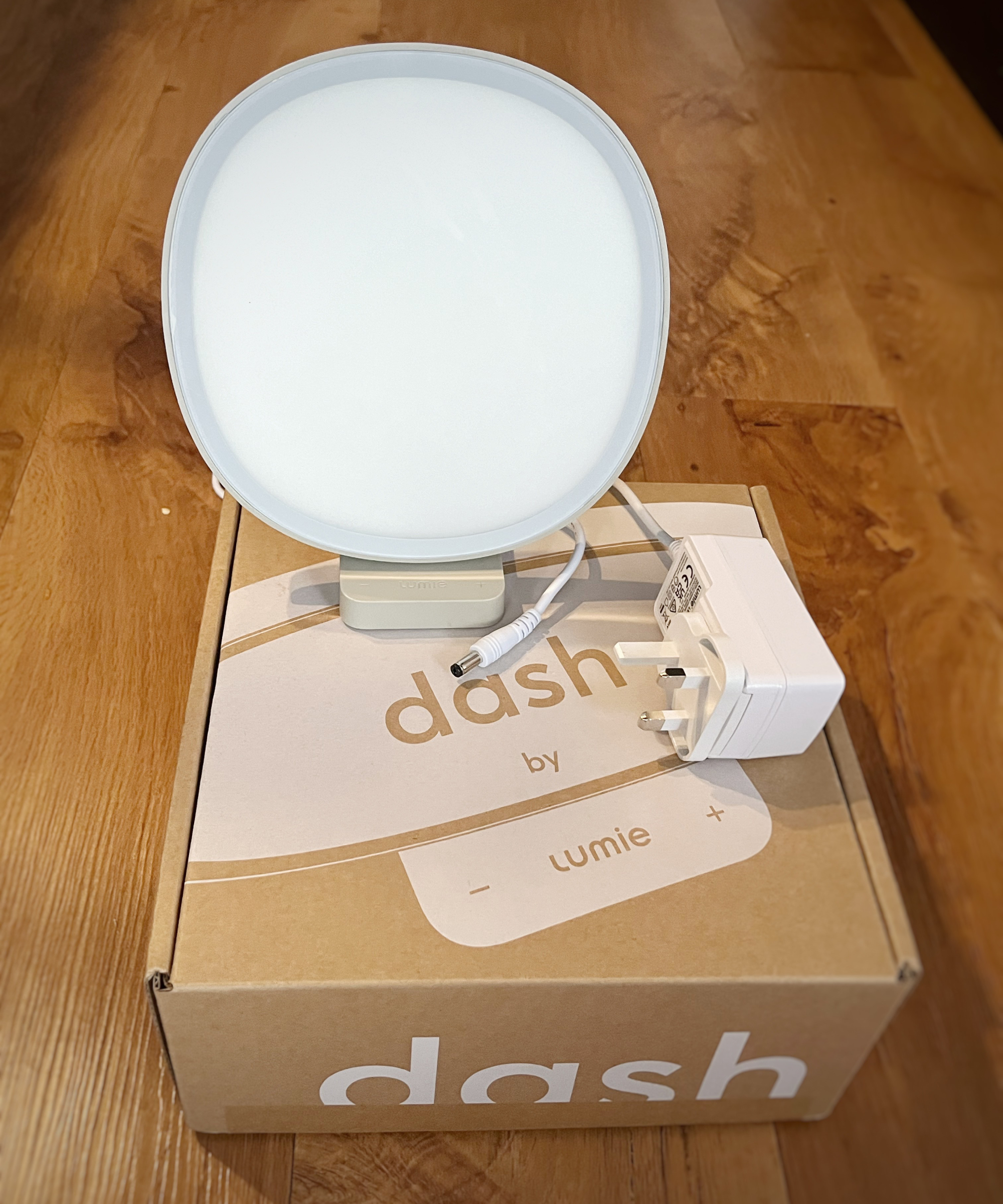
It arrived in an easy to open box, with no complicated instruction manual which could be reassuring if you're concerned a light with medical benefits may be difficult to use. A simple three step picture-led message on the front of the instruction leaflet demonstrates how to use it, with the remainder of information inside simply safety instructions in a multitude of different languages.
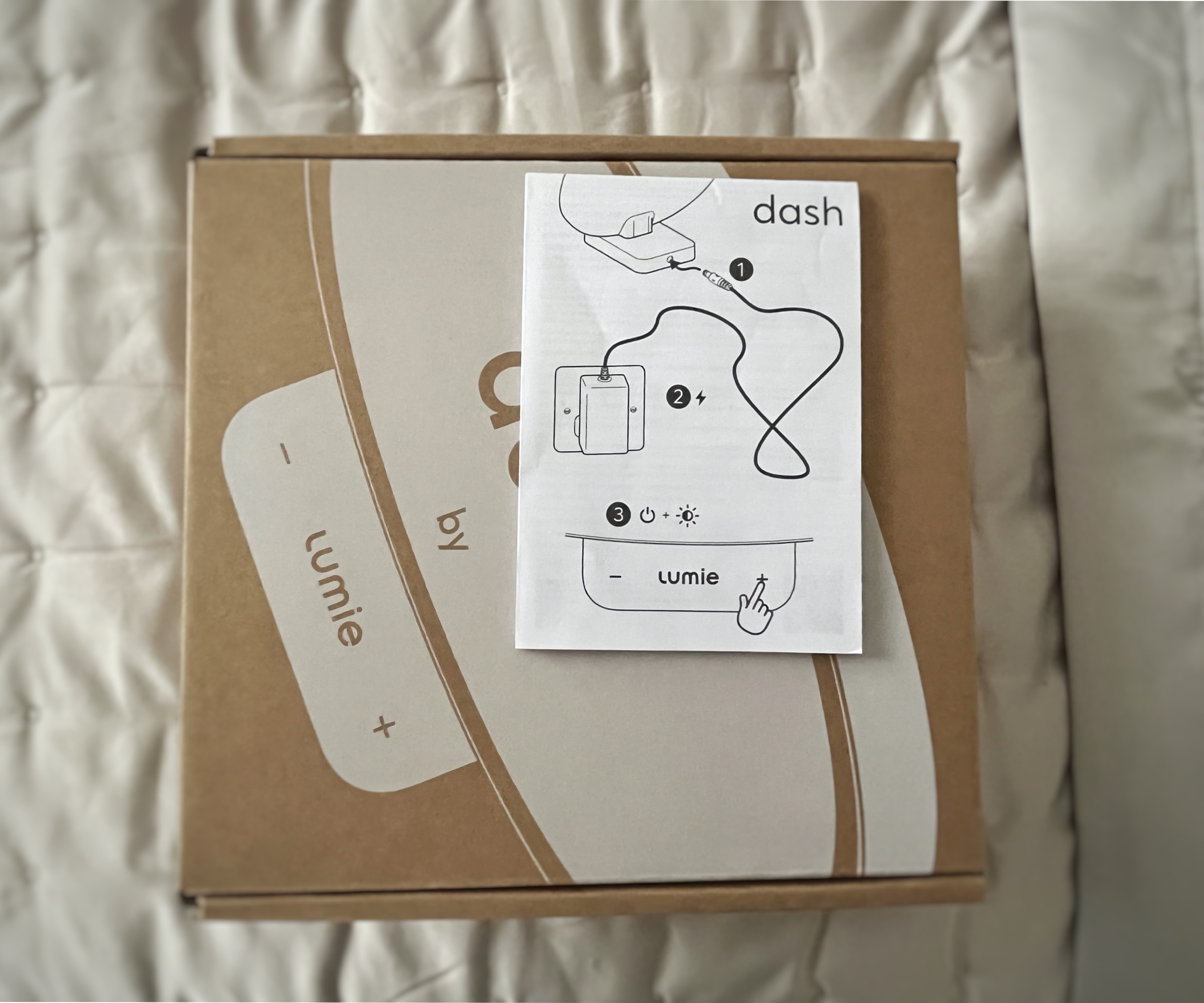
Specifications and set up
Light is measured in a unit called Kelvins which relates to the temperature of the light. In general, midday daylight sits around the 6500K level. However, the general tool of light measurement for SAD lamps is known as Lux. For a light to mimic daylight, it needs to offer at least 10,000 Lux. To get the most benefit from the lux, each lamp will usually provide a distance at which this lux is achieved.
One other important element of these lights is their ability to improve how we actually 'see things'. This is determined by what's known as a colour rendering index and the better the score, the more accurate representation you have of how objects actually appear.
On both counts, the Lumie Dash lamp meets the required standards, boasting a 10,000 lux level at 15cm distance, as well as a colour rendering index (CRI) of CRI-95+. As well as matching the daylight specification, the CRI rating will help reduce eye strain, and is great if you're involved in any work that requires close-up activity.
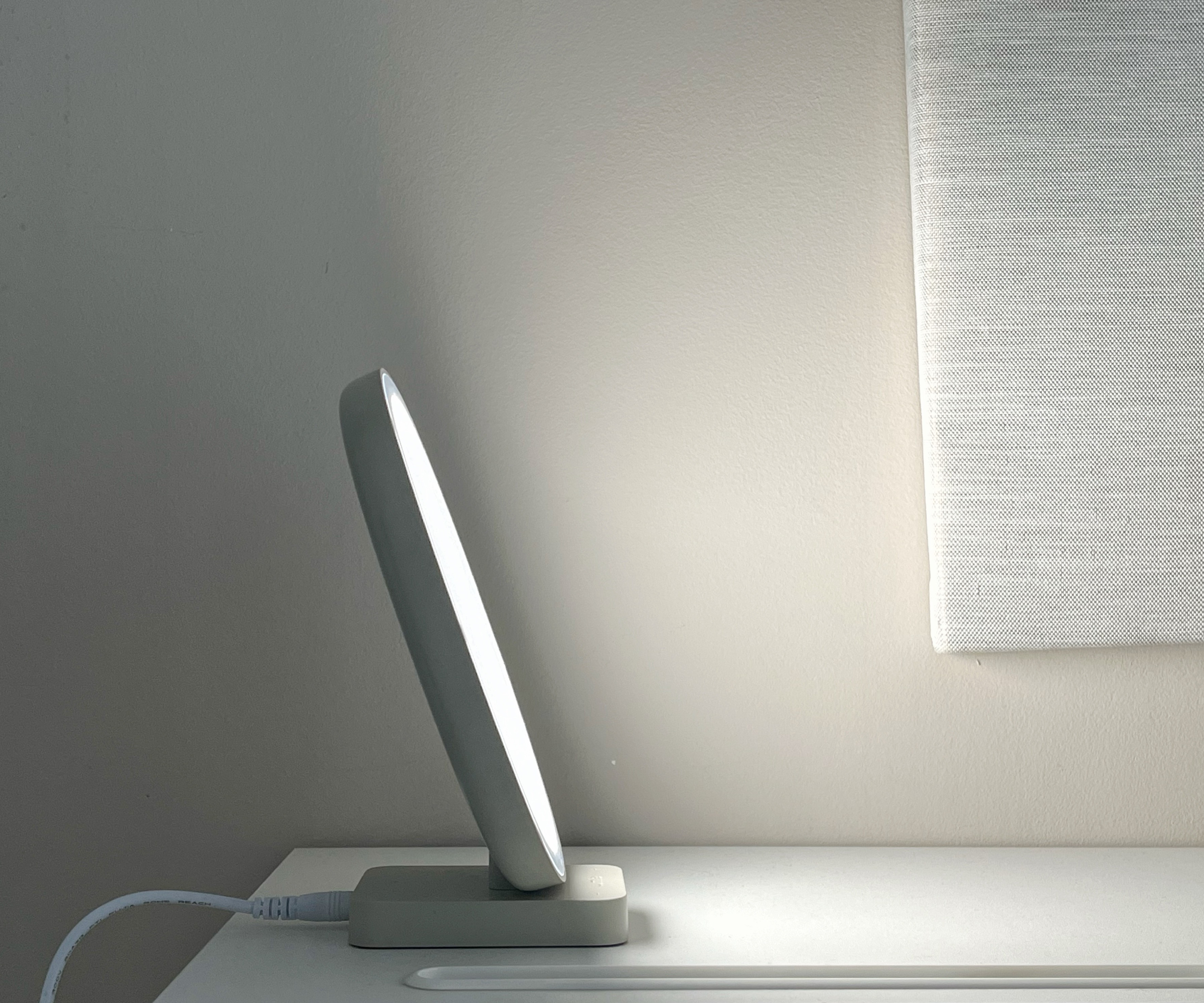
Setting up the Dash lamp
As mentioned, setting up the Dash lamp is child's play. It's simply a case of unpacking the box, plugging in the mains lead, plugging it into the wall and switching it on via a touch operated dimmer switch on the front of the base. Pressing plus or minus increases or decreases the intensity of the light as you'd expect.
Using the Lumie Dash lamp
With regards to using the Lumie Dash lamp, this is perhaps where some extra guidance on the instructions or the box as to how to use it would have been beneficial. While there is plenty of information available online about how best to use light therapy lamps, having some Lumie Dash specific instructions or suggestions would help someone who was new to light therapy, and add to Lumie's trusted credentials as an expert in the field.
That said, as I was testing the light without an official diagnosis, and more to see if some extra exposure to daylight would make me less 'miserable', I decided to start by setting it up on my desk and using it for periods throughout the working day. It should however be noted that even though it may be tempting to use it later in the evening when the darkness really has set in, using light therapy after 5pm is not advised as this will affect your natural circadian rhythm meaning you struggle to get to sleep and end up even more tired the next day.
As per the general guidelines available on line, I placed it on the elevated part of my desk riser, although it was around 40cm away rather than the 15cm recommended, turned it to face me and switched it on around 8.30am when I started work. As it wasn't as close to my face, I did then leave it on for around 2 hours or more, adjusting the brightness if it started to bother me or turning it off when the natural light outside increased.
Post lunchtime, I found myself switching it back on again for a while and then turning it off again once it felt right. After a few weeks of following this routine, I then decided to switch things around and use it in a different way.
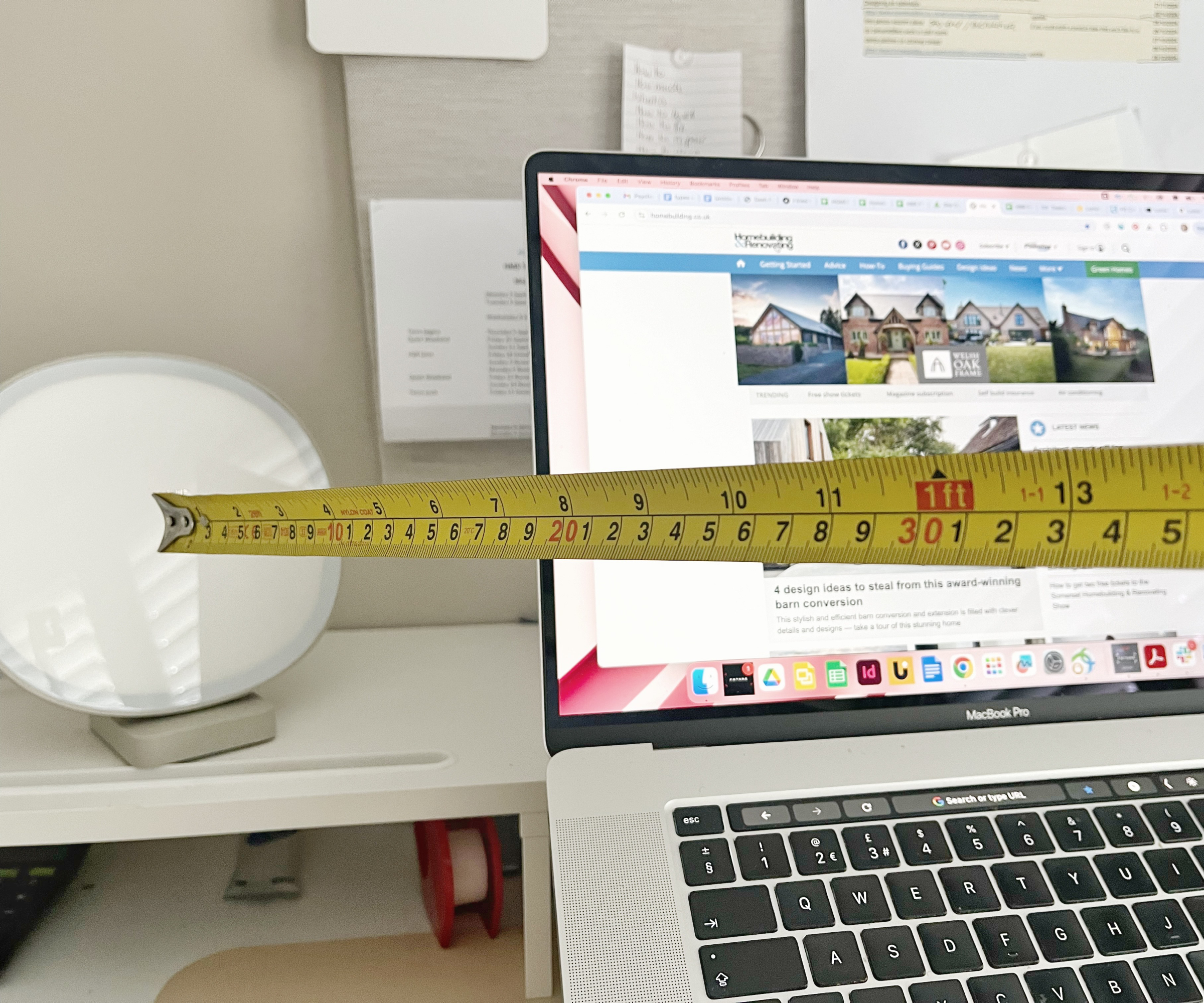
Stage two of testing involved moving the Lumie Dash from my desk to my bedside table, so that rather than switching on my bedside lamp when I woke, I instead switched on the Lumie Dash lamp.
I didn't immediately switch it on at full strength as I'm the kind of person who likes to lie in bed for a while before I actually get up. Instead, I gradually increased the lamp's intensity over a period of 10-20 minutes. Then, once awake, left it at maximum level while getting ready.
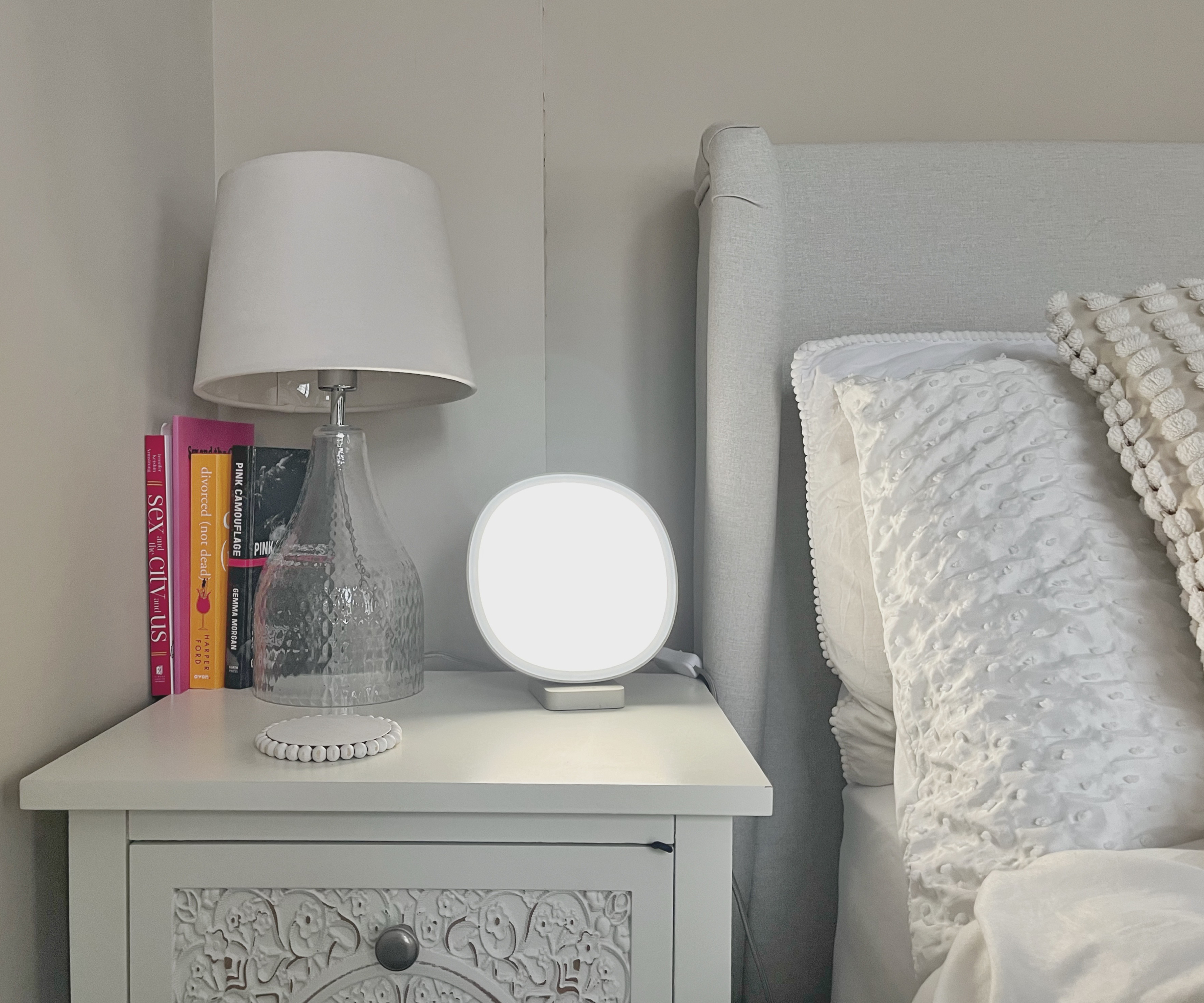
Results
Was I expecting an immediate change in mood from the first day I used the lamp? A little part of me probably was, although I knew from research that it was likely to take longer. What was immediate was a comment from a colleague on a video call that I looked well. It's true that the colour rendering and natural daylight certainly cast a far more pleasant light on my face – something worth bearing in mind if you do start your day with a video call in a poorly lit room.
As I was using the Lumie Dash while I worked, meaning it was to the side of my laptop and thus in the corner of my eye, I also found I had to play around with the brightness levels quite a lot to get it at the most comfortable level. However, it provided more than enough light to work by and even when it was particularly low light outside, my working area and indeed room felt well lit making it a good candidate if you're looking for different ways of lighting a home office.
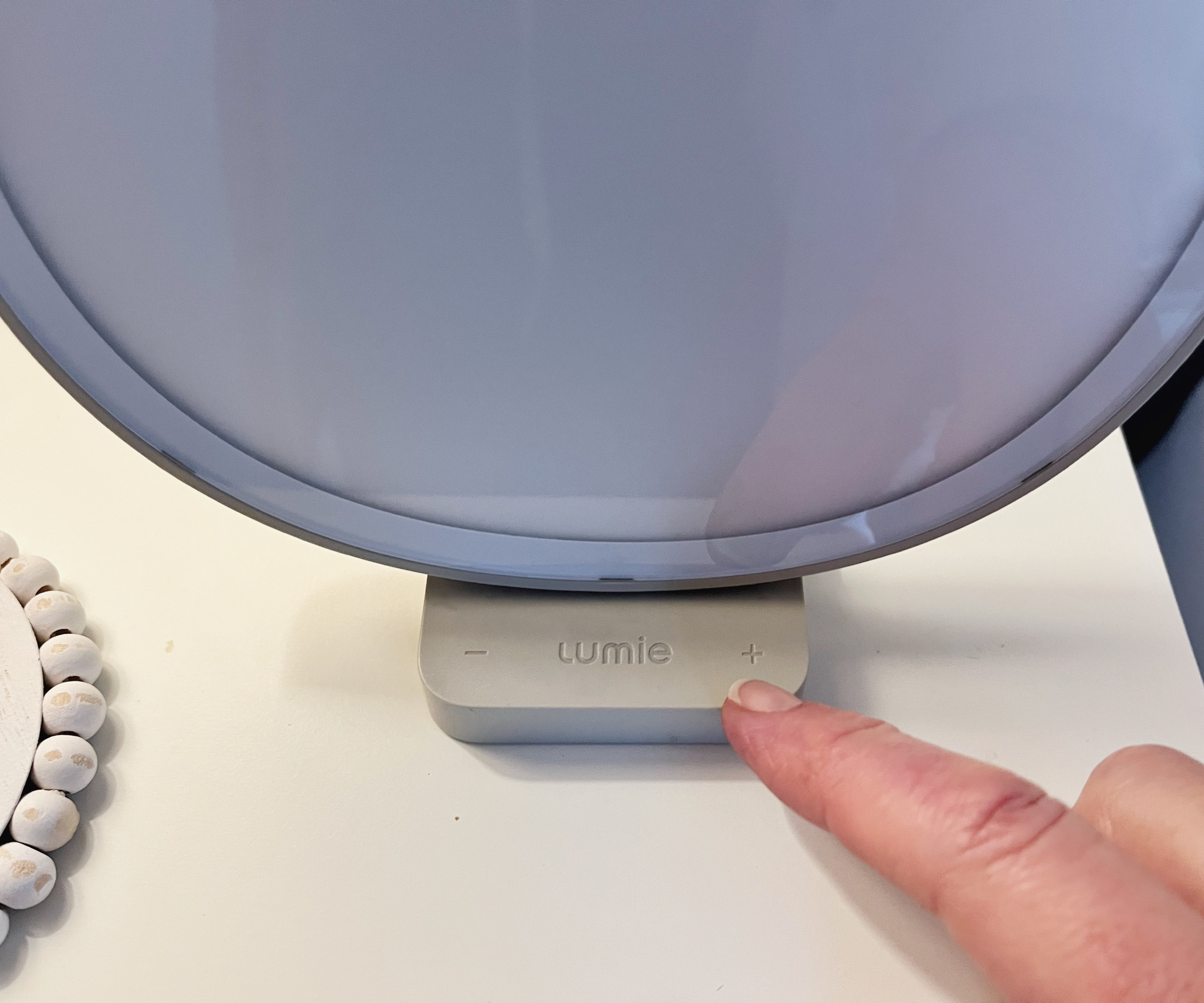
Did I eventually feel less like I was struggling with SAD? It took around a week to 10 days, but then I did find myself feeling more alert when working, and, interestingly, I found myself looking forward to switching the Lumie Dash on each day. Clearly my brain was catching on to the fact it was going to help, even before I necessarily realised it was benefitting me. As the weeks passed, I certainly stopped feeling less upset about the fact it was Autumn, and even when it's been gloomy outside, I've simply acknowledged it rather than feeling depressed by it. Getting that boost of daylight early on in the day, and leaving it on for longer at a reduced level has helped the overall low levels of light seem more bearable. Now, I only really complain about the dark once the evening sets in – something which light therapy won't help as it's not advisable to use it at night.
However, I think the real impact has been in the last two weeks when I've switched to using it on my bedside table when I wake up. As someone who struggles with sleep, often experiencing mild bouts of insomnia and lacking the ability to fall back asleep if I wake up too early, it can usually take a while to feel alert.
That feeling has practically disappeared. If I've woken earlier than required, I've put the Lumie Dash on, and if I've woken to the alarm, I've done the same. In every instance, even if I initially feel groggy, within 5-10 minutes I'm fully awake and ready to get out of bed. I don't even have to give myself a nudge, it just feels like it's time to get up and so I do. That's not to say I haven't stayed in bed longer on the weekend if I can, of course I have, but the Lumie Dash goes on when I wake and stays on until I get up, at which point natural daylight can be allowed in through my shutters.
Such has been the impact, that I haven't even moved it back to my desk for an afternoon boost, although I'm certainly planning on doing so as we head more into winter months and we get even less daylight.
Final verdict
Although I initially set out to test the Lumie Dash while working, there are a few design features of the lamp that for me, make it less suitable for certain types of work. Its rigid design, with no moveable features mean it's perhaps not as flexible for those working at a laptop or computer. However, if you were working at desk level, perhaps drawing or making items, it would undoubtedly provide you with a clear and accurate light source. But, even though the light is angled, when working with a screen, I found it harder to get it at face level, or at the right angle.
Having tested the Lumie Task lamp in a previous job, which does have movement in the arm and lamp head, the Task feels perhaps more suitable for the work that I do. But, that said, there's no denying the Lumie Dash had a positive impact on my well-being, during the time that I used it. And, the fact it is compact and light in weight means its easy to move around the home if you like to work from different locations throughout the week.
Its most positive results however have been achieved though by moving to become part of my bedroom lighting ideas, and using it on waking. A DIY version of a wake-up lamp like the Lumie Bodyclock Rise 100, but it's DIY that has definitely reaped rewards, and a method that I plan on continuing to use over the coming months until early and stronger daylight returns to the UK.
Its simple design means it doesn't look out of place as a bedside lamp, and although I've left my current one also in place, this is so I can use that one at night time.
And, as a final note, as previously mentioned, a simple set of guidance notes on how to use the lamp would be a great addition to a well priced, aesthetically pleasing and easy to use light therapy lamp that I feel fulfilled it's promise of making me feel less 'SAD'. Would I recommend it? Yes.
Looking at other ways of alleviating SAD? In the same way getting the light right is benefcial, colour also plays an important role in wellbeing during the winter months, says Ronseal’s in-house colour expert, Chris White and clinical psychologist, Dr. Gurpreet Kaur.
"It is well known that colour impacts mood. For example, lighter colours, such as white or other light shades, can reflect more natural light and create brighter living spaces, which can help to improve general mood”.
“Warm colour shades such as yellows and oranges are great for brightening up a space," says Chris White, "but they also can help with stress-reduction. Brighter tones like pinks and reds also can have the same effect but should be used more sparingly to avoid overpowering a space.
“Natural colours including greens and blues also help with mood-boosting through their associations with being outdoors and among nature," he adds.
For more ways to improve your lighting, follow our guide to lighting design, and try these green bedroom ideas to help bring the outdoors into your sleep space.

Sarah is Homebuilding & Renovating’s Assistant Editor and joined the team in 2024. An established homes and interiors writer, Sarah has renovated and extended a number of properties, including a listing building and renovation project that featured on Grand Designs. Although she said she would never buy a listed property again, she has recently purchased a Grade II listed apartment. As it had already been professionally renovated, she has instead set her sights on tackling some changes to improve the building’s energy efficiency, as well as adding some personal touches to the interior.
